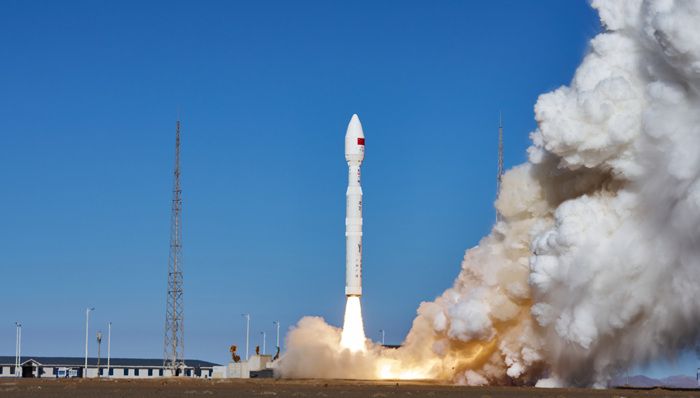
China’s Private Rocket Sets Industry Record as Lijian-1 Exceeds 10 Tons of Total Orbital Payload
Want to read in a language you're more familiar with?
To date, the Chinese Lijian-1 has delivered 75 Chinese satellites into space, with its total cumulative orbital payload surpassing 10 tons. It is now the only Chinese private commercial rocket to exceed the 10-ton milestone.
On November 9 at 11:32 a.m., the Chinese private commercial rocket Lijian-1 (Lijian-1 Y9), developed by China Aerospace Science and Industry Corporation (CASIC), successfully launched from the China Dongfeng Commercial Spaceflight Innovation Zone.
The rocket deployed two Chinese Chutian-2 technology test satellites into their designated orbit in a “one rocket, two satellites” mission — marking its tenth successful flight.
To date, the Chinese Lijian-1 has delivered 75 Chinese satellites into space, with its total cumulative orbital payload surpassing 10 tons. It is now the only Chinese private commercial rocket to exceed the 10-ton milestone.
Compared with other Chinese private-sector rockets such as Galaxy Space’s Ceres-1 and Orienspace’s Gravity-1, Lijian-1 offers higher single-launch payload capacity. The Chinese Lijian-1 program enhances mission reliability through data-driven envelope analysis and rigorous product acceptance procedures. To reduce launch costs, the team has streamlined production processes and increased in-house component development.
Lijian-1 adopts a “task-agnostic” design that allows systems to be quickly reconfigured for the next mission. Targeting the booming market for Chinese small and medium-size satellites, the rocket can lower launch costs to under USD 10,000 per kilogram for missions with total payloads under 2 tons.
The Chinese Lijian-1 program will continue advancing performance, cost efficiency, and launch frequency as China’s private aerospace sector accelerates.





